#it’s very important to me actually
Explore tagged Tumblr posts
Text

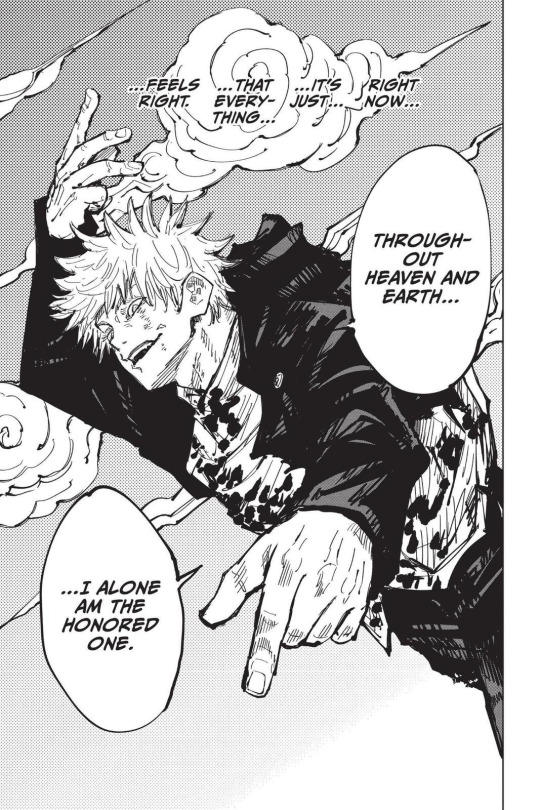
i know a lot of people are probably tired of hearing complaints of this scene but i think that at the very least this shot should have been paused/framed where you could see both of gojo’s arms and hands.
iirc we see him start to make this pose in the anime when he’s zoomed out, and then the scene pans up from his bottom hand
but like. quote aside, it’s also important that in this scene it shows the entire pose gojo was making because gege is purposefully referencing the buddha (his birth, if i’m not mistaken). and we just got a cut off part of it :/
#idk i understand being tired of hearing people complain about the innacuracies of anime vs manga adaptations#i’ve seen a lot of it on twt#(the tiredness i mean)#but angles aside i do think this is important#it’s very important to me actually </3#angel.txt#jjk spoilers#whatever#anyway glad to see other people also had issues w this ep i was starting to feel like i was being too harsh bhdhfhd#i haven’t been on here much idk if ppl have already talked about this
65 notes
·
View notes
Text



Sauron + Tears
#sauron#annatar#trop#tolkienverse#the rings of power#tropedit#tolkienedit#tolkiensource#ringsofpowersource#dailyflicks#userfrodosam#usermartanis#usermali#userkraina#userzil#winterswake#my edit#I needed to put all 3 of these shots together#unfortunately we don't actually get to see him cry in the first scene#but that glint of tears in the firelight is Very Important to me
844 notes
·
View notes
Note
can you draw candy as fiddleford. plz plz plz OuO
Oh believe me I have,,, SO MUCH ART of Candy as Fiddleford she literally drives me wild
Take this massive dump of art of young Candy and Dipper because they made lose my mind in the best way possible 💥💛💥
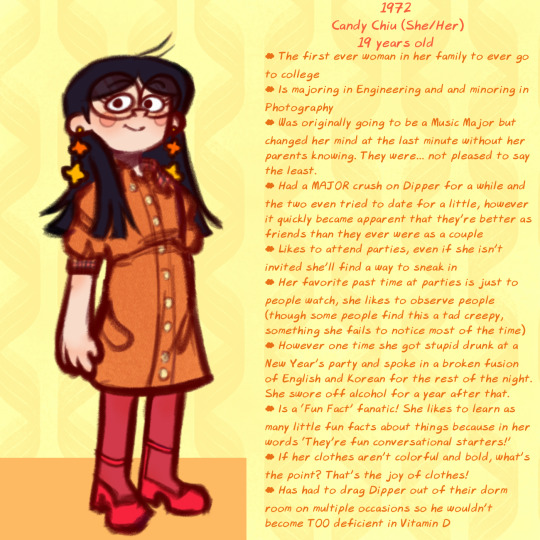
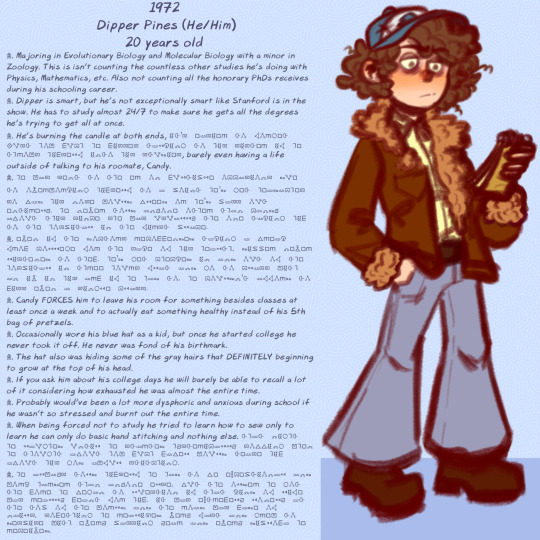
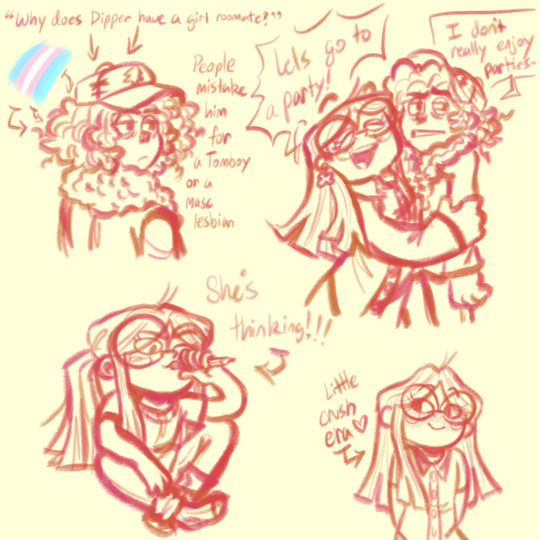
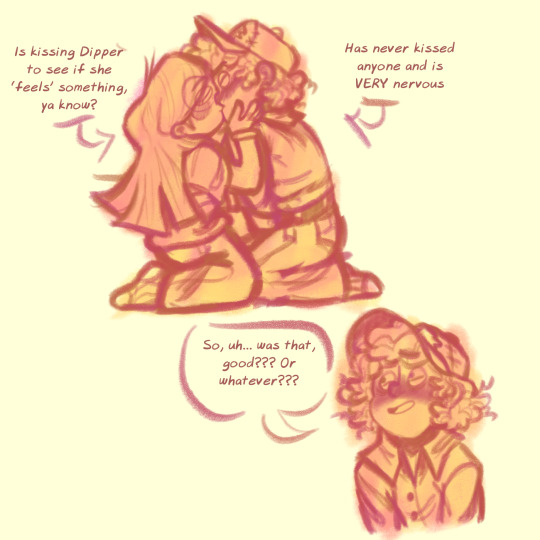
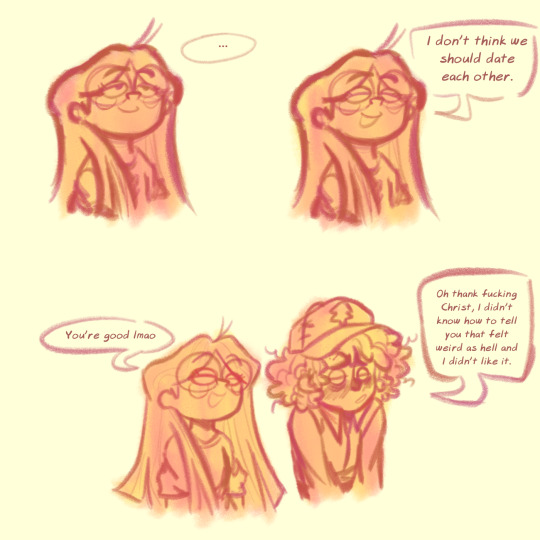
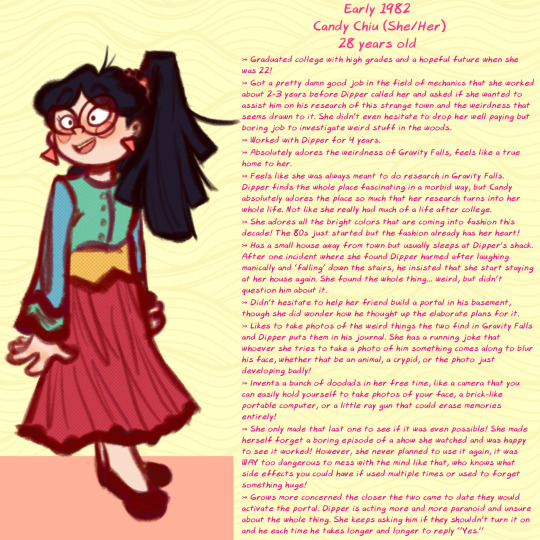
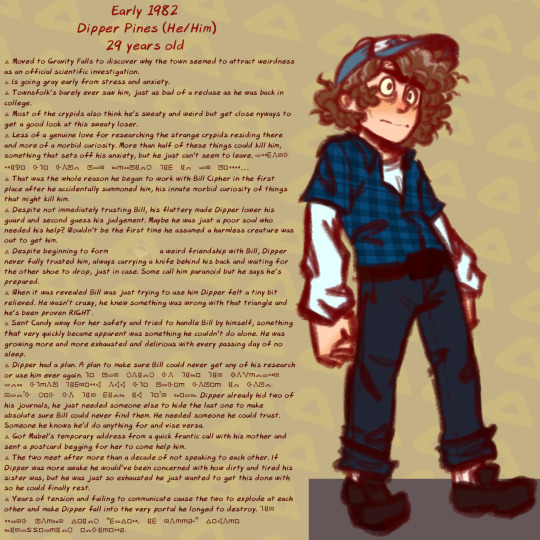
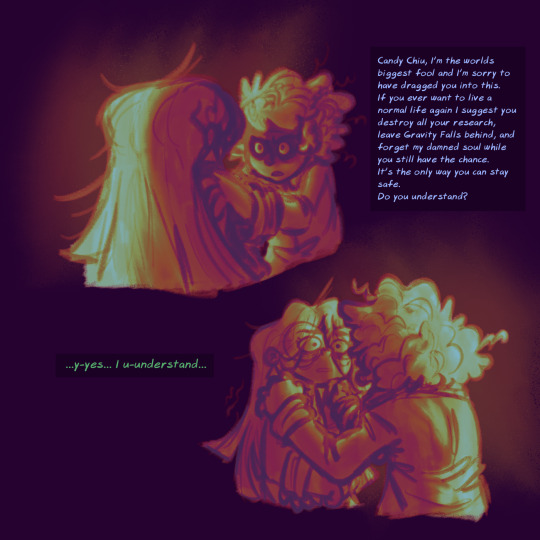
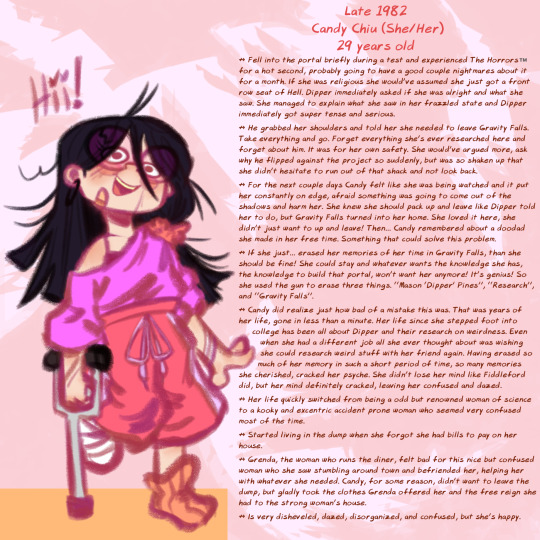
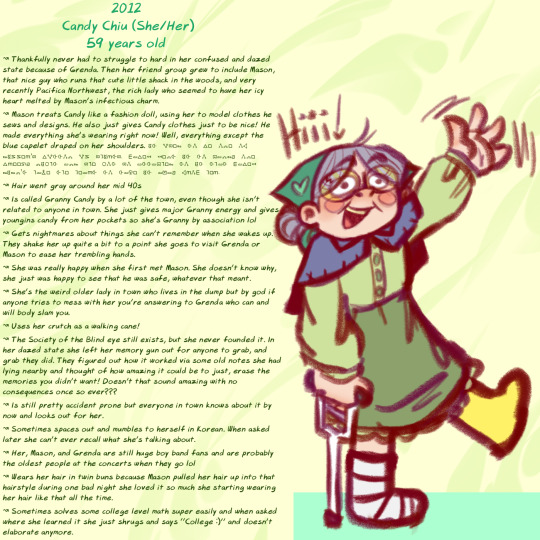
EDIT: A kind soul named DastardlyWLW decoded all the codes in the replies because I was an idiot who forgot to write down all the codes before I merged my layers, so if you wanna know what the codes all say just look in the replies and thank them for saving my sorry ass 💥💛💥💛💥
#relativity falls#relativity falls au#gravity falls#gravity falls au#gravity falls fanart#gravity falls art#gravity falls fandom#candy chiu#dipper pines#gravity falls candy#gravity falls dipper#trans dipper pines#he’s very important to me <3#art#fanart#gf fanart#gf fandom#digital art#procreate#procreate art#citricacidart#I dont think I should tag Candy x Dipper mostly because it was like… a temp fling and not an actual relationship?#idk if anyone wants me tag some kinda ship name just tell me 💥#if you notice any spelling errors; I wrote this all in like 7 hours so no you fucking don’t#cw cursing#cw swearing
900 notes
·
View notes
Text
I’ve discovered my favorite genre of Bagginshield art is where Thorin is a lovesick idiot who is Losing It and Bilbo is unbothered or oblivious to Thorin’s suffering LMAO
#thorin oakenshield#bilbo baggins#bagginshield#if anyone has more please send it to me I have like four rn#I know I made a post a while back talking about how I wish there were more posts that focused on each of their lives outside of each other#and I still stand by that but I also can’t deny the fun in a Important Dwarf like Thorin turning into an idiot around Bilbo#tbh this works even platonically. this guy has friends bc he’s lucky not bc he’s actually friendly#so I can imagine becoming friends with Bilbo is like ‘fuck now I have to be nice bc he WILL actually leave. uh. oh god’#love men who are grouchy and offputting <3#and Bilbo is oblivious not as a flaw but bc he’s just not wired that way and he’s just accepting that Thorin is weird#bc he has no basis of which to assume he isn’t just Like That sometimes same way the dwarves don’t know shit abt hobbits#and it’s not as like. Bilbo being extremely innocent either he’s just not thinking about it LMAO#and Bilbo Also doesn’t have a ton of friends (different reasons but he IS also grouchy and petty) and he’s just ‘?? ok’#they’re both fucking stupid and everyone around them is dying and in anguish#I particularly enjoy when a character who is emotionally constipated and stoic and whatever just starts losing it#not even necessarily in a sappy or angsty way just. those emotions gotta come out eventually#so for a guy like Thorin who takes himself seriously and is very closed off emotionally it’s fun to just imagine that facade cracking#meanwhile Bilbo is just like ‘you ok??’#Bilbo himself has some emotional issues so it’s double the entertainment
256 notes
·
View notes
Photo
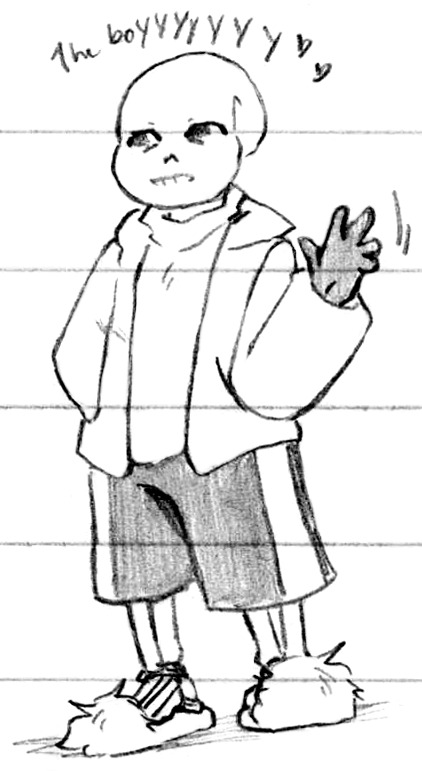
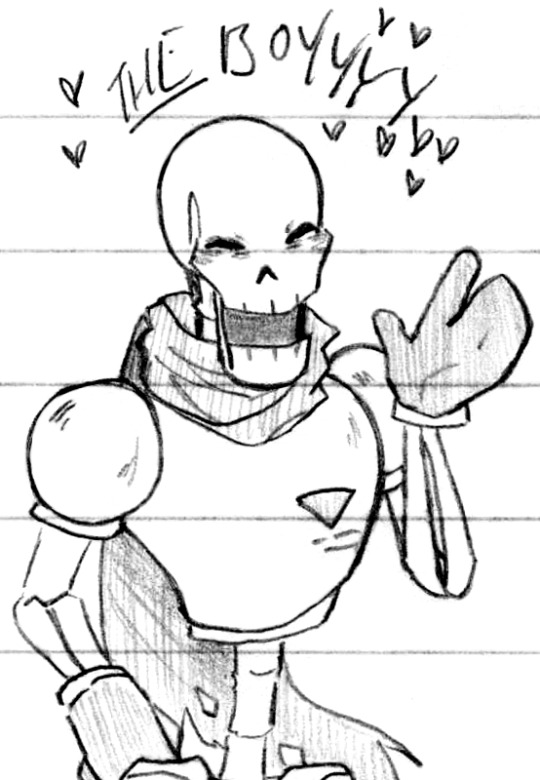
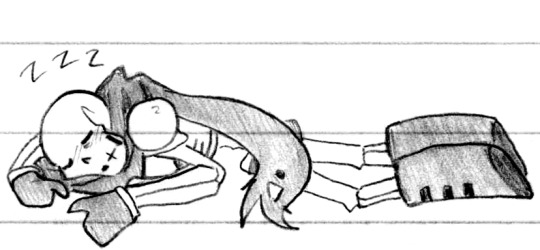
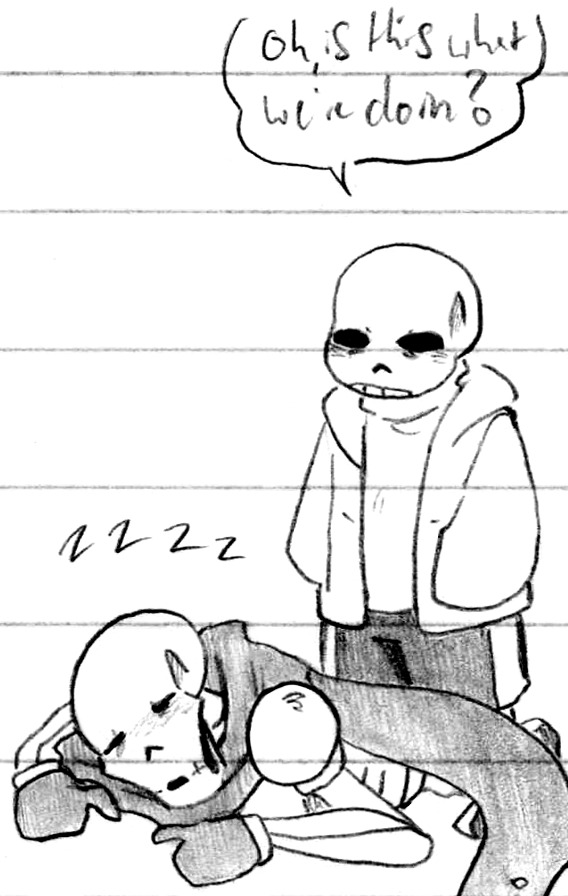

Those wacky skeletons ♥ (Patreon)
#Doodles#UT#Sans#Papyrus#Handplates#You can tell because of Sans' gloves lol#Getting-used-to-them-again doodles as well as just expressing Feeling <3 Happy towards them! Want them to be happy too!#It might seem silly for these - how many sets in now? - to still be getting used to drawing them again lol but it's because they're adults!#Their clothes and the way they hold themselves - but also especially Sans lol I dunno why I have such difficulty with him at times#He's got a cute face and I still find myself like ????how your face#Other than that tho it's just silliness hehe ♪ My favourite lads :D#I feel the need to make the distinction: I do actually have different favourites based on the AU lol#Like for example in classic I still love Flowey just a tiiiiiny bit more than Papyrus but it really is constantly neck and neck#Whereas in Handplates it's no competition even a little bit lol - Papyrus is just my Very Favourite#But Gaster is my favourite Handplates-specific character since he's unique to the AU! It gets a bit in the weeds lol#Sans isn't far behind at all of course the trio are very important! The duo even moreso imo#Going back to gloves tho I did carry over one of my quirks from my original UT doodles about Papyrus' gloves lol#I initially envisioned them as combination mitten-gloves with a free index finger and all the rest together#I still rather like the design! But it is admittedly not Handplates accurate lol#The occasional dip into self-indulgence who me? Lol#Sleeping on each other is important to me as well!! It is such a favourite hehe#Honestly I just imagined Papyrus getting so exhausted that he fell asleep in the snow lol poor lad#Sans teleported in but it's also funny to imagine him just walking up like ''you good? yeah he's fine'' *flop* haha#Silly lads <3 Do love 'em ♪
700 notes
·
View notes
Text
law and luffy are just like. what if I saw you at the peak of your miracle working competence, and then the literal next time I saw you it was at your most isolated and broken. and what if that moment of seeing you alone and grieving and terrified was the moment where I decided you were someone worth keeping, someone who I personally cared about and wanted around. how does that not make you wanna lose your fucking mind.
and then the other thing on top of that which always gets me is the way that you can just so clearly see that neither of them has any idea how to fit this relationship into any preexisting context - Luffy calls him part of his crew, but law is the captain of his own crew and would clearly die before giving that up; law calls them allies but it is glaringly obvious that they care about each other in a way that goes beyond that. of course Luffy is generally a lot less bothered about this than law, who routinely wants to put his own head through a wall about it, but it’s just such a fun layer to their dynamic I think.
#law is sitting there like NO NEED TO DTR. WE KNOW WHERE WE STAND AND ITS FINE. and Luffy’s like yeah exactly we’re besties for life :D#law head in his hands like oh god we DO need to dtr… but luffy has fully moved on that train has left the station and there’s no going back.#sorry bby you missed your chance (debatable if he ever had one LMAO)#anyways back to my first point. like it’s endlessly fascinating to me that they’re initially drawn to each other at their best and brightest#but the moments in which their relationship+devotion to each other are actually cemented are when they’re at their lowest#it’s luffy with his guts on laws operating table. it’s law under doffy w/6 bullets in his chest and still only focused on his revenge#fuck it it’s law alone and at his creepiest on child experimentation island! like that’s the law that luffy looks at and goes YOU <3#this isn’t necessarily lawlu I just think they’re eternally important to each other in a very uncategorizable way.#one piece#op meta#trafalgar law#monkey d. luffy#god I talked a lot down here…. sorry guys……#lawlu
327 notes
·
View notes
Text


Tetris Fanart.
I've been playing tetris while listening to horror podcasts. and yeah
#text#art#eyestrain#cw eystrain#bright colors#cw bright colors#tetris#nintendo#god i dont know what to tag this with. i dont wanna tag it with the podcasts themselves cuz that feels disingenuous. swagever#i actually started this piece a while ago. ok yeah looking at the date that was almost 3 weeks ago wow#but i finally decided to bring it back and finish it#ive been getting back into digital art and its been really nice. its nice having finished pieces.#ive been trying to get weirder with my art. like this piece was weirdly 'personal' in a sense#its been my unique experience listening to these pieces of media. the game in the bg is jsut as important to my experience as the art itsel#the looming sense of dread these podcasts give fit weirdly well with the high tension of some of these games of tetris#i wanted to have that sorta weird ominous vibe to it. have even the pieces feel loud and threatening.#and the gameplay being Past the ds itself is something i thought could be neat#ykno the tetris effect? where you play a bunch and then after you see the shapes everywhere;you play it in your mind?#that was part of what i wanted to channel there. but also like; how your attention works with this stuff#i might be looking straight at the ds but my attention is elsewhere; my brain is in another world#the game is still inescapable tho. tetris effect whatever. these stories stick in my brain just as much.#its all given me some. very very annoyingn anxiety. but i have to go back to them. like a moth to a flame etc. hince the moth climbing out#but uh yeah. that set up was my life for a few weeks whenever i had free time.#the main podcast this is about was magnus btw <- not typing full name so im not on the tag#and uh.#objectum#yeah i think. i think yeah.
284 notes
·
View notes
Text



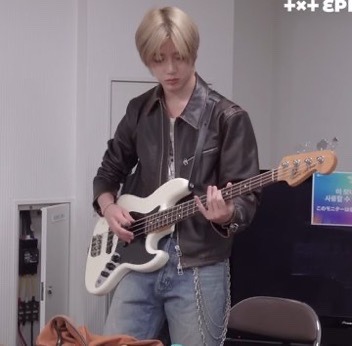
BASSIST BEOMGYU BASSIST BEOMGYU BASSIST BEOMGYU BASSIST BEOMGYU
#forgot to talk about how I felt when band beomkai performed at that awards show#I died.#I absolutely love when txt do more live and instrumental and musical kind of stuff bc i have always said they suit live band so much#also just a soft spot whenever the members play instruments for me#like I love huening kai wants to start a band so much#ALSO SKIPPING STONES#I love beomkai#they are my favourite txt duo#drummer kai was so impressive like playing the drums is so hard and he was also SINGING and like the drums is just so hard#I remember I had one lesson once and I was like nah#but also I play classical Indian drums and also as a bassist#rhythm and being on time is so important and also so hard#bc if you’re out of time just a little it affects everything#so both of them AKSJSJDHJD€€(£ THEY DID SO GOOD#BEOMGYU AND BASS ?!!!^ MY 2 FAV THINGS IN THE WORLD#THE FACT HE’D NEVER PLAYED BEFORE WAS VERY IMPRESSIVE#although I’m judging he used a pick…/j#but I listened very carefully to his bass playing bc it wasn’t picked up that well but I was actually very impressed#his solo was actually quite difficult and he learnt it very quickly like I’m very impressed#I’m also looking respectfully at his hands#he is literally shin from nana now like I have been saying for years#one day I’ll make my blog nana and txt themed#for a little while it was kinda#anyway#idk what I’m talking about#BAND BEOMKAI#DRUMMER KAI#BASSIST GYUNSBDBF#nia speaks !#beomgyu !<3
138 notes
·
View notes
Text
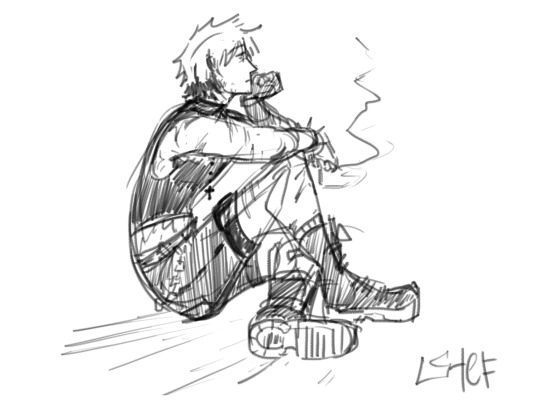
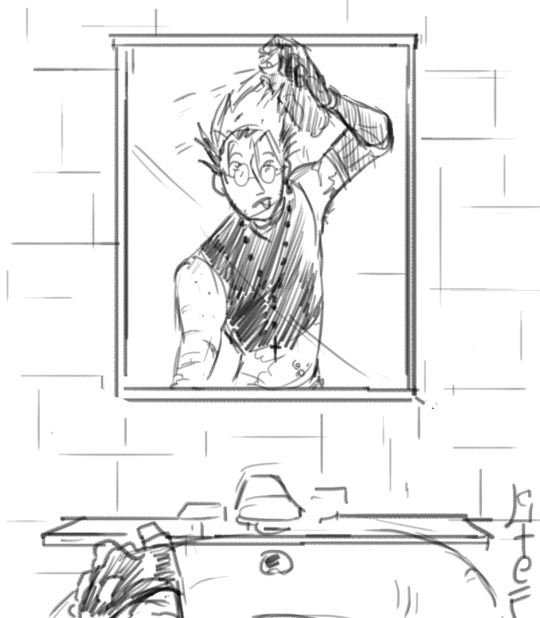
modern au vash about to die wearing inconvenient black clothing during summer
#i got artblocked.... so vash it is :3#the silly. the man ever#the transgender icon#its very important to me that he’s a freak in every au. that he wears leather everything#implied vw!!!!#ww might even be dead actually i dont know#vash the stampede#trigun fanart#trigun maximum#my art#trigun au#trigun#vashwood
170 notes
·
View notes
Text
Trying to absorb everything there is to know about ice hockey within the shortest amount of time possible really does strange things to a person. You come up against questions such as what do defensemen even do aside from skate backwards and do tummy time to protect their goalie? (Broadcasts aren’t the most informative) What the hell makes defensemen effective? What do the casters mean when they say “gap”? What are defensive details?
I love watching games back, I love trying to understand the game. I love hockey <3 But sometimes it’s nice to have help, and sometimes my favourite writers/podcasters collaborate!!
Here is part 1/3 of a podcast mini-series about defending, putting it here so I can have a copy of it in case it ever gets taken down + wanted to share with everyone some of my findings! (All episodes are available if anyone just wants to listen to them!) Transcript + edits done by me, all mistakes are mine.
Published 6th November 2024, Hockey IQ Podcast: Modern Defensemen (with Will Scouch) Ep #1 - by Hockey's Arsenal, hosted by Greg Revak (apple / spotify / youtube / bonus substack link)
part 2
[START Transcript]
Greg Revak: On the Hockey IQ Podcast today, we open up a new segment: we’re bringing back our favourite Will Scouch. If you’re on the Hockey IQ Newsletter you know his work by now.
Will, good morning. Earlier than most of us probably normally get up, but it’s a good day.
Will Scouch: Yeah, Greg, thanks for having me, it’s a lot of fun. Me and Greg go way back. We’re boys from years ago and I’m excited to hop on the show. I’m a keen listener, keen reader.
[They exchange pleasantries]
GR: Beautiful. Well, today we’re gonna talk about three concepts. We’re gonna break it into three spots though, so everyone’s gotta come back next week and the week after that.
We’re gonna talk about defensemen, because everyone knows they’re important but how do we actually play the position well?
WS: Yeah, I mean, it’s a position that’s still, to me, being explored; both by, I’d say youth and junior coaches and pro coaches alike. There’s a lot of different ways that you can do it.
I mean, I watch a lot of hockey from around the world, all kinds of different levels. I’ve watched guys develop from 15 to 24 at this point, and just seeing how their games evolve and everything, and how effective various versions of this position is. And I think it’s a very interesting area that’s still being explored in a lot of really interesting ways, for sure.
GR: Yeah, I think back to David Savard; he comes out of the [QMJHL] as this high-flying offensive defenseman, and if we just forgot about the rest of his career and you just saw him today as this great shutdown, defense-first player, you’d be absolutely shocked.
I mean, you think about Rasmus Dahlin — kid didn’t even play full time defenseman until his actual draft year, he was still playing forward a ton. There’s so much to be explored here.
I feel like [to get a lot of] — for you NHL fans — to get a lot of value in the later rounds out of your defensemen, take those offensive players first, and we can find a lot of hidden gems later.
WS: Well, yeah. I mean, actually, I’ve said this a few times but your listeners probably don’t know, but I did a presentation during the pandemic at the Ottawa Hockey Analytics Conference about this topic exactly; how, when you look at the numbers and the defensive value of players in the NHL, I found that there were just as many in the top 50 defensive value of players in the NHL, there were just as many undrafted players as there were second round picks, second and third round picks combined.
So the draft isn’t really a great historical gauge on defensive ability. Offense is a different story from defensive players, which we could probably get into a little bit.
But I find, personally, that evaluating defensemen and projecting defense to the NHL is still really spotty and questionable. And I don’t know, in my line of work, watching a lot of defensemen, a lot of the ones who I think are some of the better defenders kind of go a little unheralded, because a lot of the time you don’t need to be particularly noticeable to be a good defenseman, but scouts are always looking for the noticeable guys.
So it’s a very interesting world and it’s a very interesting thing to pick through, but there’s definitely a lot of case studies you could dig into, and a lot of players you could look at as cases of, “Oh yeah, nobody was really paying a whole lot of attention to them!” or maybe people were thinking about them the wrong way. But if you think about things a little bit outside the box, you might be able to see something really interesting there.
GR: Yeah, so let's dive into why that may be. Classic example would be Lane Hutson, so maybe we'll pick on him a little bit, but I definitely want to talk about Rasmus Ristolainen, because he is an interesting case study that we wrote about on the newsletter.
So where I want to start with this is just modern day defending. How are defensemen defending today versus old times? A lot of times it was the big hit, separate the head from body. The puck’s somewhere, but let's separate the head from the body, and we’ll worry about the puck later — that is going bye-bye.
Every coach I talk to now, they prefer having the puck rather than having a head on a stake. So for me, it comes back to this old saying of, “position before possession.” We're gaining body positioning, we're not so much separating head from body, but puck from player.
All right, so we've got position before possession. It's super valuable in gaining the space that you need to have first whack in a puck or put the puck where you want it, or just push it to a teammate. Just having the idea of owning space and there's no better league at this and no league that values it more than the NHL. If you don't do this well in the NHL, sooner or later, you're going to find yourself out of a job making a heck of a lot less money in a league that probably no one really cares that much about. You want to be in the show, the big lights: you have to value this more than anything.
And this is actually the one thing that I noticed about Hunter McDonald. He's in the Flyers’ system now — he was an overager, but I was like, “This guy is unbelievable!” He’s a huge frame, you can’t miss him out there. He would just get the positioning before possession, and I was like, “Okay, that’s interesting, let me watch him further.”
And I feel like he’s going to be one of those bottom of the lineup guys who, unlikely, made it out of being an overager in the [United States Hockey League], going to college for a few years, but has those little details of a defenseman that you see in modern day play, which is positioning overall, which is an NHL trait to the nth degree.
WS: No, I know. I think I would definitely agree. Those are the players that are always really, really fascinating to me because you look at a guy like Hunter McDonald and the production just isn't amazing. But it doesn't — to me, when you look at defensemen, it almost doesn't really matter. That's kind of a very secondary-slash-bonus style of thing that comes with a player.
I see a lot of defenders every year and it seems like a thing where a lot of them, maybe at the lower levels, there is a little bit more of that “separate the head from the body”-type of player. And I think there are NHL scouts who still gravitate towards those guys but, at the end of the day when it all comes out in the wash, it's a lot of the time the guys that are kind of, I hate to say ”boring”, but just very effective, and just they're always in a good position.
The guy I always reference as a young defenseman who, I think, is just a really, really high-end defensive guy is Kaiden Guhle in Montreal. We're going to talk a little bit about Lane Hutson in a second, but Kaiden Guhle is a guy who, when he was in the junior level, just played such a great, balanced style of defense.
He was a good skater, but he had really good length. He was a guy who didn't just lay the body every single time, but he certainly could if he needed to. It was about his lateral mobility, it was about tracking rushes, keeping inside the dot lines, and preventing chances from inside and leading with his stick, but then finishing with the body if he had the opportunity or the need to do so. And he seemed to have a really good read of just how to do his job really, really well.
And so that's been a lesson for me for sure. He was a really interesting case study a few years ago, and he's become a pretty solid NHL defenseman. I mean, on a team this year that’s kind of struggling defensively I think he’s been one of the brighter spots on that defense group there, [he’s] doing a pretty good job at least suppressing chances against.
GR: I don’t watch as much as you do, prospects, but Guhle I did catch. For me, the play style wasn’t very good. He had elements of it, you could see the flashes, but he was just really brash. His decision making and his reads were quite poor. But the tools were there, and it was like, “Can he adjust?” Which I think he’s done a phenomenal job [of], and I think Montreal is probably the perfect place for him to develop a lot of that.
So I think you're spot on like, “Okay, how does he actually apply?“ Having assets is one thing, having the tools is one thing, but how do we properly apply those assets, those tools that you have in a good way? So I think another piece, for me, is if you do have the speed, is just making sure that you're controlling speed and then you're also keeping small gaps.
And just knowing with my high school team that no one knows what a gap is, let's define that real quick, which is: the difference in space between the forwards and the defensemen. So the space in between, “How much space are you [allowing]?” in hockey term slang. It's underneath you versus on the other side, which is above you or behind you. So, “How much space, what's that gap between D and O?”
(Editor’s note: He says O instead of F here, I assume because the person attacking isn’t always a forward. As in, “How much space between the defenseman and offenceman?”)
So you got the speed, shrink that gap as much as possible. Don't give them the space to operate or work in, or, I even call it the space to think, which [it often becomes] for forwards, especially unsophisticated ones.
WS: Yeah, I mean, that's really the bread and butter of a lot of the position. It's so much of this, like you said, gap control. I actually just did a bit of video work for a really high end player, [an] NHL draft pick playing in Sweden this year, who is producing really well.
But in terms of the defending side of the game, he's not the most incredible skater you've ever seen, he's not the biggest guy in the world. And a big thing that I noticed, that even at the professional level that was kind of a bit of a work in progress, was that gap management. Especially because the footwork wasn't amazing, [he was] keeping his feet a little too stationary, gliding backwards and sort of allowing that gap.
And when you watch the NHL that's the point of the whole exercise, watching the NHL and how they play. Forwards are fast and they're smart, largely. The guys who can score are the guys who know how to get through soft defensive pressure, the guys who know how to find lanes and cross up defensemen, and if you don't have the footwork or the mobility or the reach or all of it — all of the above — to track all that and manage it, then it's going to be a lot tougher to do your job.
But the interesting thing, though, is that there's a lot of different ways that you can get defensive jobs done. That's always been very interesting to me; seeing how different players approach the position in different ways and seeing the efficacy of that come out in the wash, and how their offense balances with their defensive ability. It's a very interesting world to dig into, for sure.
GR: Yeah, I think you've got a rabbit hole there. You just kind of opened up around defensive skating. What do clean feet look like? What does defensive posture look like, that actually allows you to have that kind of mobility?
So we'll leave that for another day. If anyone wants to go check it out on the Hockey IQ Newsletter, they can do so. Just look up defenseman skating development. We've got two good pieces there talking about building and maintaining defensive posture and keeping clean feet, which — actually massive base for anyone.
It allows you to have the proper gap that allows you to kill plays early, and ultimately, it's a lot about just controlling speed. You don't want McDavid building up to full speed. You don't want MacKinnon building up to full speed. You don't want anyone coming up to you at full speed. It's very hard to maintain that kind of speed going backwards [that we] even generate in the first place.
How do you kill it early? How do you get a hand on someone? Or, my favorite example is just proper pivoting. A guy dumps a puck on you, how are you going back? What does that pivot look like?
I'll let you open that up because at the NHL it's almost too good, where you can't see what a bad example looks like, but you can see it's everywhere.
WS: Yeah, I mean, it's a make or break skill in the NHL. It's where a lot of defensemen die. I mean, it's a cliche at this point to talk about pucks in deep, to talk about [getting] pucks deep in the offensive zone, get below the goal line, dump and chase. People make fun of dump-and-chase kind of stuff. But if your team is built to do it, you can do it.
You can take advantage of defensemen in the NHL who just don't have the speed or the agility or the skating ability that some of your forwards might have. It is a lot easier to skate forwards than it is to skate backwards. That's just, you know, anecdotal, but also pretty factual — you're naturally going forwards.
I think an interesting trend that you're seeing a little bit more of [is] what they would call ‘scooting’. You're the coach; I don't know if that's exactly what the terminology would be, but [it’s getting] your defensemen in the neutral zone, kind of pinching a little bit more and having them skate forwards, tracking play towards the boards.
So it's not necessarily that they're doing their backwards crossovers, it's not necessarily that they're entirely skating backwards, but you see guys who are really talented skaters or do have a lot of quickness driving play to the boards in a more aggressive way than having the play in front of them. It's about them sort of tracking that play laterally, which is an interesting thing I think you're seeing more of now.
I think there are definitely coaches and systems that love to play their defensemen more that way, and the weak side defense can sort of fill between the dot lines for them and sort of leave the weaker side of the ice a little bit more open. That's kind of what I mean. There's a lot of different ways to achieve these kinds of goals, and I think you're seeing a lot of different things popping up to adapt to this.
In situations where you have a dump and chase or something like that, or just getting pucks in deep or whatever you say, when you have a defenseman who has trouble with their footwork and turning around… Trust me, I'm a defenseman, when I play hockey, I strap on the skates — I play defense myself and that's where I fall apart, when I do fall apart. Which is often. But definitely, when play turns around and I’ve got to change directions or change my area of flow, it can be tricky. And in the NHL, I can only imagine how tricky it can be there.
GR: Yeah. I mean, a good pivot you're looking at three steps total, like boom-boom-bam and you're there. You watch an amateur game and it could be like five, six, seven, eight chops before [they] finally get going and [it’s] looking like a proper forward stride again. [Or just] getting into a good defensive posture and positioning. It's total scramble mode.
A big one for me, too, is just the direction that you pivot. Do you wait for that offensive player to commit to their lane? It's just a great defensive habit in general, letting the offenceman make the first move. If you're making the first move, you're the one showing your cards. It's kind of like showing your cards first in Poker.
Let them make the decision and then you can pivot into them. Now you can get that position before possession, or at least get a chip on them, slow them down. You can either make it easier for yourself or your partner. So one, there's the clean footwork on the pivot, and two is making sure that we're controlling the speed and we're pivoting properly in the direction that we want to pivot.
There's a ton of times where I see, especially the lower levels, players coming up, they're in a bad spot, they're skating forward, defenseman skating backwards and they just chip it off the boards. And the defenseman is like a dog just following the puck and it ends up in the middle of the ice where the forward actually went. Again, the NHL is the best at this so it's really hard to see bad examples of pivoting into and controlling the space of the opponent.
WS: Yeah. I do a lot of work outside the NHL, and the biggest thing I notice is not necessarily the number of chops it takes, but the amount of time. You can see guys taking two seconds, maybe more, to get themselves turned around, tracking pucks below the goal line.
To me hockey is a game of milliseconds a lot of the time, right? I was working with someone years ago who really shared the idea with me that, in the NHL, generally goals are not scored if you have the puck on your stick for more than either half a second or a second.
I can't remember off the top of my head, but it's so fast in terms of; when you score goals in the NHL, it's when you touch the puck for a very short amount of time in the offensive zone and get a puck on net. And so, if you have guys who take too long — and “too long” might not be very long… If the difference is relatively short at the time you're making those pivots or those changes, but the [opponent has] got a lot more speed than you and you're [taking more] time to then start generating that speed to match the opponent, you're in trouble.
And in my opinion, I think that you want your defensemen to be more assertive. I always fall back on the strategy of; make them make a decision, make them commit. That might imply that you do the committing first, but that's where the importance of footwork and tactics come into question.
You have to have strong support, whether it's from backchecking forwards or your partner. You want to be able to adapt to quick players who might fake one way, go another, and be able to use your stick or use your feet or both to be a factor regardless of what happens.
It's very interesting to watch defensemen play. I find it really, really interesting to see the different approaches of different players and especially how they evolve and get into the NHL.
But yeah, I mean, [it’s so pivotal], the skating ability; defensemen who can skate, it unlocks so many doors for their career. If you're an elite level skating defenseman, it just unlocks so many doors that interest me. If you're not, and if that's not a strength of your game, then it can be a big struggle, especially against faster opponents. Even if you're big and physical and pretty good throwing the body or whatever, there's a lot more of the game in the NHL these days. Very, very interesting stuff.
GR: I think that's actually the perfect segue into someone who, early in his career, threw the body too much and sold out too much on plays that he probably shouldn't: Rasmus Ristolainen.
Great case study, great case study from when [John Tortorella] started working with him to where he is now. Will, I'll send in the link here from the Hockey IQ newsletter so we can track a little bit better with each other.
I found him to be a fascinating player. High draft pick, 8th overall in 2013. Really pretty, smooth skating, big body — has all of the tools that you would traditionally say, “Yep, that checks [out].” And then you looked at his stat profile and it was just abysmal. His micro stats were terrible. I think the only thing he was good at was D-Zone Retrievals, which, being able to take contact, it was kind of an easy thing for him.
WS: Yeah. I remember watching Ristolainen when he was in junior hockey, because that was the earliest years of me being kind of curious about that side of the game, and I did not really recall that being a premier area of his game.
I remember him being big, but pretty mobile, and has some skill to play around with. He did have a bit of a physical edge to him, but it feels like it was that tail end of an era in the NHL where those big, mean, physical guys were kind of in vogue, and people were kind of curious and needing guys like that. And I guess that's what Buffalo drafted him to be.
I remember being very surprised that he was in the NHL the year he was drafted. It just did not look like it was really working out there. And Buffalo just seems to have been not a great fit for him, they kind of turned him into something that he wasn't, but I do think that he's turned into some sort of serviceable defenseman.
But he, to me, is a great example of one that I always look back on and go, “Man, what if?” Like, what if things went a little bit differently for him? Because there was good stuff there, it's just I feel like the development was focused in the wrong areas.
To me, 65% of the work [is] scouting, and developing — the easy part is drafting good players, the hard part is developing them and bringing them along into being good NHL players.
So to me, if you can find the most amount of things that get in the way of that process being easy, then you're doing a really good job. And with Ristolainen, I feel like in his case they inserted more things to make that journey more difficult and sort of turned him into something that he wasn't, which is always a scary thing for me to think about doing to a player.
But it's not over for him, obviously. He figured it out. Obviously, Tortorella found something for him to do, and he has shown a little bit better. But yeah, he's always been a what-if guy for me.
GR: I always liked how Tortorella, after the 2022-2023 season, was doing his media stuff and he was like “Yeah, he's our most improved player.” You're a guy who's getting paid big bucks — I think he was making five million plus that year, still is, probably — and even him, he was like, “I was just bad the first half. And then around Christmas break, I started getting going. The second half was much better.”
Basically, the first half, they were just trying to rebuild his defensive game, and this is true for anything. Zach Benson's another good example of this. If you can't play defense in the NHL, you're going to be out quick. Benson can play defense despite being — I think they list them at five foot 10, but there's no way.
WS: Yeah, no, no. I know. He's a little guy, but he's another great example of a player where I, in my work, I do not care how big you are. I just care about how you play. Even in the NHL. And I feel like Benson's a really, really good example of that; a guy who, just forechecking alone is a really… The easiest way to defend is if he can cause turnovers in the opposing team's offensive zone, a guy like Zach Benson does that extremely well.
And if he needs to track guys through the neutral zone and backcheck, he'll do it, and he does it really well, and he does it at a speed that I found to be projectable to the NHL. And again, that's another one where I was a little surprised to see him in the NHL so fast, but he didn't really look out of place there.
He's had a bit of a slow start this season, but just a really, really talented player, and one where you kind of do look at and go, “Yeah, these smaller guys can definitely defend.” They just — the expectations are a little bit higher, and maybe for good reason, but he checks all the boxes for sure.
GR: Yeah. So for Rasmus (Ristolainen), there's two big things that, when I dug into this, that Torts was working at. At this point, I was so intrigued [that] I was tracking every single time Torts spoke and Rasmus spoke to the media. So I was like, “I wonder what they're actually doing?” Which, Torts can be tight-lipped, but he gives it away if you follow long enough.
The big one was just inside, like too much, he was finding himself, Rasmus was finding himself on the outside. So whether that be outside the dots, outside on bad ice, for whatever reason, or just finding yourself outside, like losing defensive side positioning to the offensive player.
If you finish contact, but now you're on the wall and your player's got to step to the net, that's trouble. There's a great, great clip the other night featuring, I think it was (Aliaksei) Protas [who] ended up scoring the goal and K’Andre Miller of the New York Islanders. So Caps — Rangers, not Islanders — Rangers… Where [Miller] went in soft, didn't really take positioning, got beat back to net, and Protas just put out a stick and just tapped it in, Igor Shesterkin never had a chance.
A similar idea of; okay, good, maybe you got some contact, you tried to make the stop, but you still need to maintain defensive side positioning. You still need to finish on the inside. So if you're doing contact, you can't overreach.
You just can't do that. You have to stay in good positioning.
And the second piece was just, finishing with contact to get stops, like stopping movement. Offensive play is a lot about movement, and defensive play is about stopping movement, AKA getting stops. So he would maybe make a play, or get a poke check, but the puck was still moving and could be easily on the other team's stick.
So how do you make sure you're always staying in good positioning? Staying on the inside, as Torts put it. Or the other piece, which is getting stops, or finishing with contact — but smartly, not chasing the contact for contact’s sake? Being tactful in your play.
I feel like Risto really just learned how to play defense smartly. He was actually thinking and being intentional about what he was doing, rather than like, “I see a puck and a player, I'm going to go end that!” And then, boom, in the big scheme of things, it’s a net negative. Even though at the moment, it may have, especially to him — otherwise he wouldn't make the play — seemed like a positive, really it was a negative for the team.
WS: Well, that's the interesting thing too, going back to talking about junior players and the context in the draft and how defensive players might go a little bit underreported or undervalued in a sense.
I see this all the time, especially with North American defensemen, especially with Canadian ones, but there are definitely players who everybody talks about how good they are defensively, everybody talks about how solid they are. They're big, they're physical, they're mean, blah, blah, blah. But then when you watch things in detail, it's this sort of Ristolainen-style thing. You're talking about K’Andre Miller where it's like, they're along the boards, they're doing the thing along the boards, but they're losing.
They're allowing guys to get low on them, get through them, and even in the junior level, right? What good is it if you're trying to pin a guy against the boards and they give you a little shove, crouch down a little bit, chip the puck three feet out from you, you don't adapt to that, they get three feet of space on you, throw it out in front of the net, and boom, you got yourself a scoring chance, right? I see that all the time.
It's the focus on the body and not focus on the turnover, turning that possession back over, that really seems to be a tough lesson for a lot of defensemen to get over. I find that a lot of defensemen from the age of 18 to 23, in the grand scheme of things, their style of play doesn't drastically shift all that often.
And so, when I see things like that happening, I'm going, okay, I gotta either hope that this guy puts in the time in the gym and becomes, just, a strength nut, and pins that guy to the boards so they can't do anything, or they figure out a way to get into those situations, take a step back, chip at the puck. Really battle for the puck rather than focus on the guy.
Because I've seen it so many times with guys who are bigger and more physical, they apply it in a way where I feel like coaches will go, “Wow, look at you go, you're playing hard, you're playing the thing!” But then they escape, this opponent might escape, and create a little bit of space for themselves. And again, this is a game of inches, it's a game of a couple of feet, and every inch matters.
So in some cases, yeah, you get those situations where guys like Ristolainen, yeah, you're doing the thing, people clip the hits, people clip the physical play, but then five seconds later, someone's got some space on you and they generate a scoring chance. And so what do you really value, right? Personally, fewer scoring chances would be ideal.
GR: I love it. Last piece to wrap this up, because I think it'll go well into our next piece, which is point play. Shorting the zone.
I was able to find some phenomenal clips and do some photos of this for the newsletter. But the concept of; if you're watching a game in the NHL, if you can see all five of the people trying to break the puck out, low in the zone… A lot of it, you think about the NHL today, is like a swarm. We're going to do close support. I'm going to try to crowd the puck out.
A good way to respond to that is to short the zone, which basically means your defensemen, instead of hanging out at the blue line, are going to go into the offensive zone. And they're going to start with small gaps, they're going to be [at the] top of the circles, if not a little bit lower.
Tortorella is another big fan of this, so you can see it with the Flyers a lot, too. I would say [Sheldon] Keefe is another example of a coach who does this a ton. So you saw a lot in Toronto, now you'll see a lot more in New Jersey, which is the perfect d-core to make all of this work. So I think Devils are going to be good for — that's going to be a great fit.
But just the idea of crowding in the space, setting small gaps, so when you do start defending, you can either cut a play off early — it's an easy pinch there if you don't have to go very far — you can cut it off. Or, 2; create a turnover in a much better spot than what is in your own zone. Why not make it in the o-zone? So from a positioning standpoint, phenomenal place to start, good way to kill plays early.
Before they can get going, before the team can build speed, and just being able to put yourself in a good spot to take advantage both from a defensive standpoint, but offensive standpoint.
WS: Yeah, I love when I see this being deployed. I think, again, I'm a geek, like I'm a math guy, and even just thinking about the numbers here, it makes such a difference if you think about it.
The offensive zone from blue line to goal line is 64 feet. So you're looking at the difference between a guy standing at the blue line being maybe 75 feet from the net or at the top of the face-off circle where you might be 20 feet closer, maybe 20, 25 feet closer. So you're cutting down the time at which you give the defense to adapt, the goaltender to adapt. You're cutting that time down by a third-ish, a quarter to a third. I'm ballparking here, but that automatically is just based on where you are on the ice.
If you can compress the offensive zone on your opponent, you're laughing. The second thing I wanted to mention here is this is, again, why skating ability and quickness and speed are so important to me. Because it is objectively a better position to be in when you're in that position — closer to the top of the face-off circles for your defensemen.
But if you do have a situation where the opponent has possession of the puck you have to get set up, you have to cover that gap, you have to cover for yourself, or you have to have some sort of system in place where a winger can cover for you if you're caught in the offensive zone. Ideally, you have your defensemen who can wheel up, get some speed going, get positioned well to counter that attack, and have a system that can swarm whoever has that puck in the offensive zone.
I think it's a really interesting trend for sure. It's a simple little thing, it's a concept that you see definitely a lot more now than you used to, but I'm all about it. It just makes sense mathematically, and it plays into exactly the styles of player that I always look for: guys who do pinch a little bit more aggressively, but have the mobility and the skating ability to cover for themselves.
I would rather have a player who tries something creative, or tries some sort of play that could lead to a high scoring chance, but may relinquish some space on the ice, but has the ability to cover for themselves.
And I can at least as a coach, rely on them — not that I'm a coach — but rely on them to cover for themselves. To go, okay, I can rely on them to try these things, because I know that if it doesn't maybe go their way, which happens in hockey all the time, I'm not going to be upset at this player, but I know that I want them to backcheck, cover for it, because I know they're capable of it.
I think that that's sort of the trade off that you have to live with, but I'm totally cool with it.
GR: All right, so we're going to call this end of the day on some modern day defending, and we'll pick up on point play in episode two.
[END Transcript.]
part 2 <- convenient link at the bottom <3
#puck!script#puck!research#p!res:defenders#p!res:archiving#proud of this one. took ages and definitely not perfect but very important to me !! <3#please read if you have an interest in dmen and understanding dmen... there's a few mentions of specific NHL players ->#rasmus ristolainen#<- features heavily here. there's a lot of flyers talk actually and I found it super interesting!!#Parts 2 + 3 transcribing... soonish. as soon as I get a bit more time on my hands.
51 notes
·
View notes
Text
me and the pathetic loser I pulled by being a pathetic loser myself.
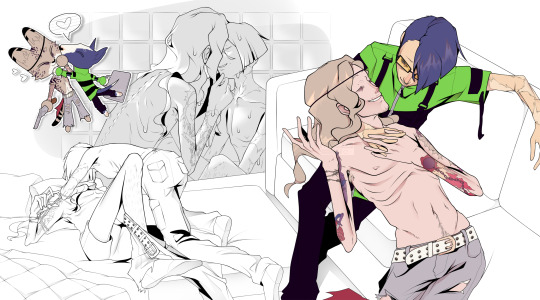

#hehe#takajin#persona 3#takaya sakaki#jin shirato#i originally kinda wanted to draw them less thin; scarless and with naturally colored hair#as i am actually deeply disapproving of writing jin as just fantasizing about the epic gay sex in itself. that's not what this is about#it's not ''i wish my wife stopped bitching about her headache and just let me get balls deep in her already 🙄''#it's ''i wish my beautiful wife didn't have a headache and felt good enough to maybe want me balls deep in her herself :--(''#very important distinction#that said it would unfortunately spoil the joke. and takaya's funky too long too thin limbs just so happen to be really fun to draw 🤷#body image cw#suggestive
137 notes
·
View notes
Text
sunrise on the reaping is where headcanons go to die.
#thg#the hunger games#thg sotr#sunrise on the reaping#i think it’s actually a little concerning that this is the first thing i thought when the book was announced…#i have an entire list of victors… i have wrote a scary amount of lore abt them… i am terrifyingly attached to them#but like even the canon victors!! if beetee doesn’t win the 40th i’m jumping off the roof.#if wiress’ last name is confirmed and it’s not lisiecki suzanne and i are going to have words.#(i hc her as polish and for some reason this hc is very personal to me. she also has to win the 48th. i don’t make the rules.)#if brutus doesn’t win the 43rd! if lyme doesn't win the 46th!! if any more victors are mentioned by name i will jump out of the window!!!#suzanne don’t you test me#so yeah anyway!!!!#normal abt them.#(i am not in fact normal abt them)#(fun fact i have a pinterest board with sections for each victor. yes it does have 1500 pins. no it is not my biggest board)#so yeah i am so sorry for the rant in the tags but its my post and i do what i want <3#sotr#second quarter quell#oh yeah also the first quarter quell victor!! if their mentioned by name.. or district… or anything i swear to actual god#suzanne im outside your window. yeah i just want to talk.#for legal reasons this is a joke#it’s not important that if any of these things don’t align with my personal fanon i will probably just ignore them. that’s not important.#dayne talks
78 notes
·
View notes
Photo

And never let you go ♥
Bonus without the overspill lighting:
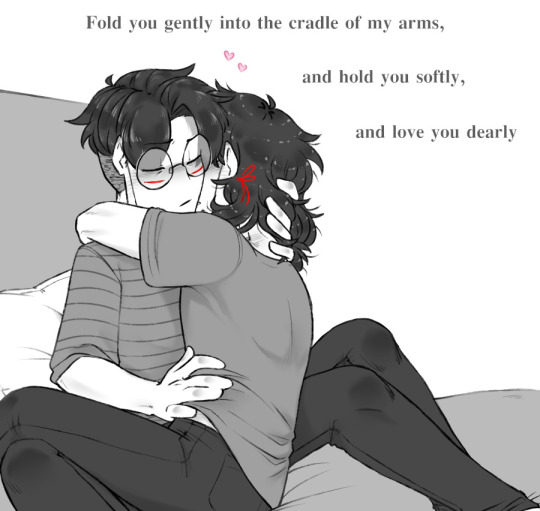
#💟#Digital art#Full Art#Art#Edgar#Scriabin#It's that time of year again where I get real sappy about Vargas ♥ Because yes! Once again it is my own personal Vargasversary! 🎊 Yaaaay#Seven years now - I don't know what to do with seven years it feels like a hard to define number haha#Right in the middle between five years and ten years! A while to be certain but hard to define as a Long Time either hmm#Well whatever it doesn't matter <3 The important part is that I still love Vargas and them very much ♥♪#I actually didn't really have any specific plans for this Vargasversary :0 I haven't been drawing them much again#Other things have drawn my focus and attention hehe ♪#So I just kinda set my hand loose - no sketches on paper no defined idea - this is just what my hand/brain came up with in the moment#I'm pleased :) I think it accurately expresses how I feel about them hehe <3#I wrote down what ended up being the text/caption a couple months ago while I was in Big Love in their direction#I don't remember what inspired it anymore other than just - They ♥ Themst ♥ Do love them <3#I've planned my next reread now ♪ Barring anything drastic (like an update lol) I know when I'll be rereading next#I'm looking forward to it! :D As always hehe <3#It's still a bit a ways off which works well for recharging :)#And of course I'll be doing my usual in the meanwhile - this and the main anniversary and my sketchdumps and Requestober haha#The caption is as much me as it is Edgar after all <3#Even quiet and sleeping I still find them as a comfort - a place I find rest and joy in ♥#Inspiring and lovely and wonderful - pretty and tender and dear!#Oh and#Always finding a way to flip up the bottom of the shirt#Hehe <3
134 notes
·
View notes
Photo

Do you remember? Nope! (Patreon)
#Doodles#Mother 3#Duster#Lucky#Went and reread Lost and Found again <3 The first chapter anyhow it's my favourite#Planning to do a full reread after I actually Pick Mother 3 Back Up agh I've been away so long!#Other things doin' - other things reading and playing#I do want to tho! I'm on a Duster chapter if I remember correctly :D#Still so funny to me how Lost and Found was the impetus of my fic printing project haha#Haven't gotten to it yet that's also fallen off! I want to get into back-and-front printing but for that I need to do formatting#I wonder if there's a program for that actually :0 Seems like there should be! A way to have every first-and-fourth on the same side...#Doing it by hand is a good way to get misprints :P I already have one of my fic prints with a misprinted first/second page!#ANYway lol - Duster! Lucky! He! <3 <3#Got very inspired by the mental image of the ghost of Lucky's history haunting him <3#Those missing pieces! The core of him still there still sweet and gentle but those important elements that make him Duster#Following him overshadowing the happinesses he finds with doubt and anxiety#It's all so lovely <3#So fun to watch him stumble through into things he wants and feeling unsure if he Can#Of course he deserves it he's wonderful ♪
101 notes
·
View notes
Note
I’m a sex-repulsed ace, and reading the latest chapter of 666 (as well as your analysis here on Tumblr) made me realize that I have been subconsciously thinking about MY OWN sexuality from an allo perspective? And that it has kinda been messing me up?? Like, ever since I learned that sexual attraction was actually a Thing and that it’s Important To People, I had been carrying around a fear of being deficient in some way and not being able to love to the same extent as allos. (1)
Even though I know logically that’s complete garbage and totally untrue, I felt left out of the loop because people seemed to care strongly about this thing I couldn’t even imagine. Whenever it looked like a relationship might happen I panicked for a reason that I couldn’t understand. But now I’m starting to realize that it’s because I was subconsciously terrified of an ‘ulterior motive’ behind the other person’s reasons for wanting to be with me. (2) That part of the reason they even cared was because of something I don’t experience. So thank you, because this realization just clicked into place while reading your work. The thing is, this way of thinking was just internalized in such a way that I didn’t even realize it was there until literally this week. And I think you’re right; one of the main reasons behind that is because I’ve always consumed media written from an allo perspective. (3) If ace/aros are shown at all, they’re depicted as “lacking” and their character development usually revolves around being “fixed” by the story. When I was ~10 years old my mom sometimes let me watch the Big Bang Theory with her (looking back, maybe not the best decision). Anyways, there was one episode deep into the series where Sheldon (who for the past nineish seasons was probably the closest thing to mainstream ace rep) has sex with his girlfriend for the first time. (4) Afterwards, he says something along the lines of “that was better than I thought it would be”, and it’s presented as a Very Good Thing and a big step in their relationship. I think a lifetime of stuff like that makes it very easy to internalize aphobia and feel like the lesser part of the relationship. Or to feel like the other partner is making a huge sacrifice to be with you. That got wayy too long, sorry. All that was just a lot of words to say that I appreciate you. Take care of yourself!(5)
The portrayal of asexuality that you see in media being almost exclusively as you described is very tedious to me because it presumes that something is inherently lacking in aro/aceness rather than that feeling of "lacking" being something that is induced by societal norms. Actually, one of the things that I find additionally alienating is that fandom spaces specifically have been getting better and better about ace characters - but got damn does fandom not jive with aromanticism. Like, a character doesn't want to fuck? That's becoming a liiiittle more fine, it's 2024, we stan consent. But not shipping someone romantically?? Not so easy, now.
I'm glad that my work has been something that resonated with you in this respect! Alastor cares a lot about his reputation as a demon but is pretty blatantly a person who could not possibly give less of a shit about being "wrong" for not being experiencing romantic or sexual attraction. The explanation Viv gave at one point for his own understanding of himself (that he thinks he's just "waiting for the right woman") actually stuck out to me a lot because it's a very "well, nothing is wrong with me for not feeling anything, it's the world that's failed to produce a suitable person" perspective.
But having that kind of confident perspective of your own rightness in the world is really not often portrayed in media, or even in fandom, which even ten years ago was still in the throes of standardizing "Oh, no! Me, gay? These feelings are so wrong!" style m/m content and is honestly not that far off from essentially that for aro/ace characters.
Anyway, all of that is to say that there's not yet much out there that doesn't frame allo/amatonormative values as the default that "even aro/ace people can (and should want to) achieve," and that it's really fun to write a fic that is unequivocally from the perspective of a character who is aroace and doesn't see it as even remotely a fault in himself. Does he have moments where he's a little confused and trying to process how things fit for him? Absolutely. But he just doesn't strike me as the kind of guy who thinks he owes romance to Vox of all people, hahaha. I've written him trying to conform to allo/amatonormativity more with Mimzy, because I think the social standards of their time could push him into it, but Vox? Absolutely not, he does not respect Vox enough for it to even enter his mind.
And then, on the other hand, writing it from an aroace perspective centers the way that romantic and sexual interest can feel like a betrayal of a good thing. With a character like Alastor, it frames romantic and sexual attraction the same alien way that we usually see aromanticism and asexuality framed as.
In the end, this is just one of a plethora of different experiences that aro/ace people can have, but it's one that I really wanted to see represented more, so I'm very happy to write it. I'm glad that you're enjoying it!
#ask#personal#Anonymous#long post#t#aroace#ace#he cares about Vox at this point!#but that's. not really the same as respecting him.#anyway this next chapter is important to me because it's very#how do I put this#“this was okay at the moment but that doesn't mean he's okay with it overall and forever”#“and it does not mean that they've 'progressed' their relationship to the point where Alastor being aroace is a 'nonissue'”#“(feat. ofc the heavy implication that it was an issue in the first place)”#ANYWAY. SOMETIMES I HAVE A HARD TIME EXPRESSING THIS IN NON-FIC WORDS#SO HOPEFULLY THE FIC AS IT CONTINUES SPEAKS FOR ME. I AM GLAD THAT IT HAS SPOKEN TO YOU SO FAR <3 THANK YOU!!#sexuality#my writing#hazbin hotel#this is a hot button topic atm and it took me a minute to write a reply#that didn't seem like it invited discourse lmfao#actually I still feel weird posting my opinion this strongly oops OH WELL
79 notes
·
View notes
Text
oh yeah before i forget cute mttpoly headcanon because i said so: when killer finds out (through SOME way of means. he has his ways) that dust and horror like something then at every chance he can he goes and finds that thing for them :3 because I SAID SO AND IT'S CUTE ‼️‼️ (something something killer has no idea how to properly show affection and appreciation after believing his whole life was meant to cause pain and suffering to those close to him and now that he's trying he does silly goofy stuff like this hehe,,,,,,, dust is DROWNING in piles of fluffy blankets and books. horror cannot keep up with eating the amount of snacks killer keeps stealing for him 😞😞😞)
#this was inspired by when parents do this to their kids after finding out they like one thing and buying that thing over and over#thank you untitled29876011111 for helping me figure this one out ‼️‼️‼️ wasnt quite sure of how i could justify this fluffest 💀💀#listen untitled29876011111 gave a fire reason as to how this wouldnt be incredibly ooc and weird but anyways#i haaaave to add onto it and make it sillier by suggesting that this isnt even a conscious thought#killer just sees something that one of then would like and hes like 'hey dust and horror would like that'#and for SOME reason his body's already walking into the shop looking at the thingy 😒😒😒 he didn't do that on purpose#but hey hes here now........... and then killer steals the thingy and causes a massive commotion#i need to get to writing my mtt fic so that i can actually put all these ideas to use#a lot of my ideas can work in the context of that fic i just havent written it 😒😒😒😒#at first killer just started giving the thingies to hrdt casually but then horror started pointing out the stupid amount of stuff he gave#and then killer was like wait is this not good???? uhhh what can he do.........#and then he started Upping the dramatic factor by getting cards and chocolates and flowers and stuff with the gifts#(horror hated it (he preferred the older way killer gave them gifts) but dust was flattered (and a bit embarrassed))#killer's just glad to have figured out yet another detail about hrdt 😈😈😈😈 time to add it to his always growing list of things about them#AUASGAUXHSJZHAH MTTPOLY SWEET CUTE FLUFFY MTTPOLY ARE SO FUCJING STUPID#i NEED to study and analyze killer so i can come up with more accurate stuff than what i already do heheheehehe#guys this isnt ooc at all trust 😒😒😒 untitled29876011111 approved it himself and CLEARLY his opinion is very very important and peak#anyways back to drawing shitty horrordust (i must shower and brush teeth hehe) perhaps i will actually get a full night's worth of rest :3#tricule hc#YEAH THIS IS A HC THIS ACTUALLY HAPPENED IN MY HEAD TRUST THIS IS SOOOO THEMMMMMMM#killer sans#dust sans#horror sans#murder time trio#mtt poly#murder time trio poly#utmv#sans au
34 notes
·
View notes